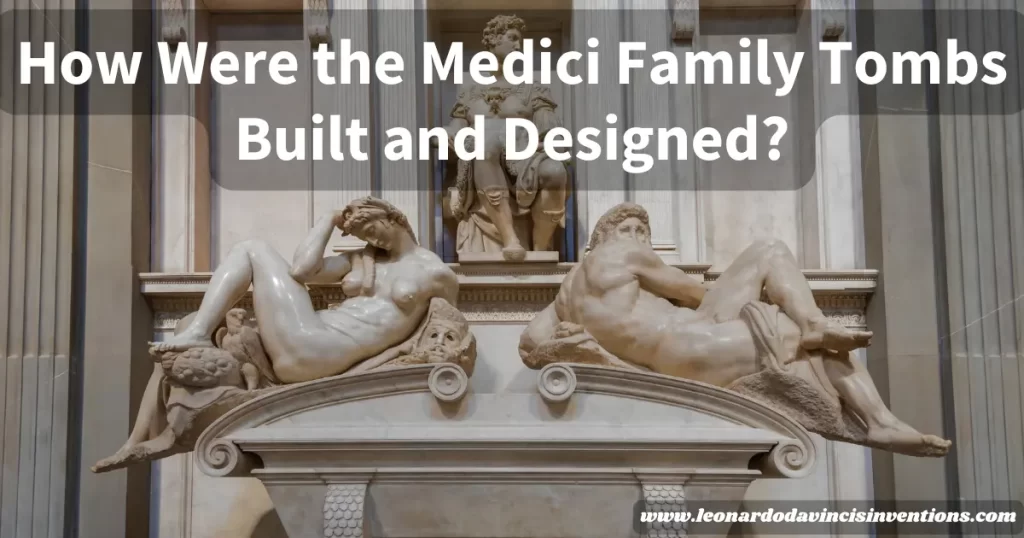
For centuries, the Medici Family Tombs have fascinated historians and art lovers. However, many people are unsure how they were built and designed.
This topic feels mysterious, but exploring it reveals a world of art, power, and legacy that shaped Florence. Skilled artists and architects, including Michelangelo, constructed the tombs and designed the New Sacristy, sculpting monumental statues to honor the Medici rulers.
Builders created the chapels as an extension to the Basilica of San Lorenzo. The New Sacristy and the Chapel of the Princes reflect the Medici family‘s desire for grandeur and lasting influence.
This article will guide you through the craftsmanship, political ambition, and artistry behind these structures. Michelangelo’s masterful work and innovative architecture combined to make the Medici Family Tombs some of the most celebrated memorials in European history.
Historical Context of the Medici Family Tombs in Florence
The Medici Family tombs mark an important chapter in Florence’s history. Their construction links political ambition, economic power, and cultural achievement with the rise of Renaissance art and architecture.
Origins of the Medici Family and Their Political Power
The Medici family became prominent in Florence in the late 14th century. They began as bankers and merchants, gaining control over city finances and politics.
The Medici rose to power by managing the city’s finances and forging alliances with other leading Florentine families. Their ascent led to the formation of the Medici Dynasty, which controlled Florence for generations.
Through their role in government, they influenced the city’s politics and culture. Their status allowed them to commission grand funerary monuments like the Medici Chapels.
The Role of Giovanni di Bicci de’ Medici in Establishing the Dynasty
Giovanni di Bicci de’ Medici was key in founding the family’s fortune. He expanded the Medici Bank throughout Europe, making it a major financial institution of its time.
This wealth gave the family social and political leverage. Giovanni was known for his careful management and laying the groundwork for his descendants, such as Cosimo de’ Medici and Lorenzo de’ Medici, to hold political power.
His burial in the Old Sacristy set a tradition for Medici burial sites that would later expand into more elaborate tombs and chapels. He established the patronage system central to the Medici influence on arts and architecture.
Because of Giovanni, the Medici family could commission impressive sculptural remains and funereal monuments that displayed wealth and religious symbolism.
Florence and the Duomo of Florence as a Cultural Backdrop
Florence in the 14th and 15th centuries was a hub for creative and political activity. The city’s impressive structures, like the Florence Cathedral, shaped its identity as the birthplace of the Renaissance.
Projects commissioned by the Medici helped spur advances in architecture and art. The Basilica of San Lorenzo became especially important as a spiritual center and site for many Medici burial monuments.
These religious and civic centers offered a public stage for the family’s funerary art and tomb decoration. They reinforced the Medici role in both the church and the city.
Influence of the Medici Bank on Artistic Patronage
The Medici Bank was the family’s main source of power and artistic patronage. Its economic influence reached throughout Europe, giving the Medici the means to support projects by major Renaissance artists.
This included funding for events, construction, and the flourishing of Medici-style architecture. Such patronage allowed the Medici Family to commission leading artists, including Michelangelo, to create sculptures and tomb decorations.
Projects in the Medici Chapel at San Lorenzo included intricate marble and stone carving. Their choices impacted the direction of Renaissance art and left a lasting legacy on Florence’s visual landscape.
Medici Family Legacy Through the 14th, 15th, and 16th Centuries
From the late 14th century through the 16th century, the Medici family’s influence grew in Florentine society and beyond. Family members like Cosimo de’ Medici and Lorenzo de’ Medici became patrons of the arts, statesmen, and rulers.
Funerary monuments and chapels, such as the Medici Mausoleum and Medici Chapel statues, highlight the family’s lasting impact on funerary practices and art. The burial sites of important Medici family members turned into symbols of status and innovation in funerary art.
This period marked a unique time for Italian nobility and Renaissance sculpture.
Architectural and Artistic Design of the Medici Family Tombs
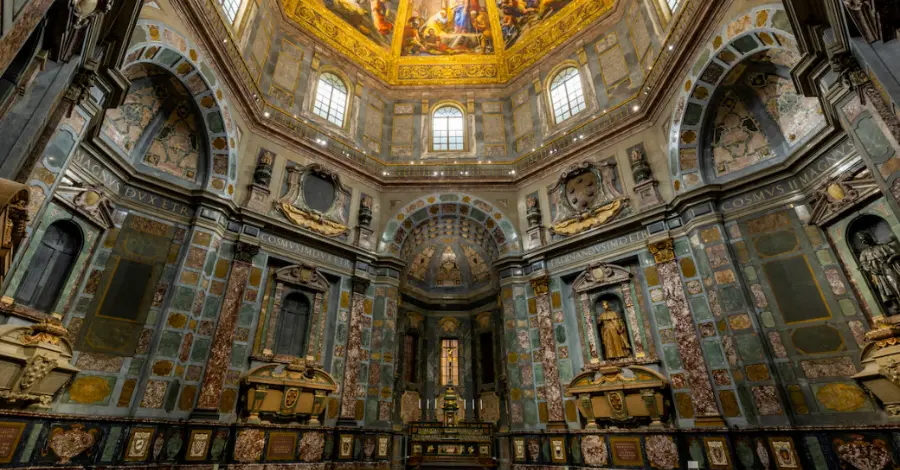
The Medici Family Tombs reflect Renaissance ideals and a desire to showcase political power and family legacy. Their construction and decoration combined innovative architecture, masterful sculpture, and thoughtful religious symbolism.
This resulted in some of Florence’s most iconic funerary monuments.
The Basilica of San Lorenzo and the Medici Chapel as Burial Sites
The Basilica of San Lorenzo in Florence served as a central burial site for the Medici Family. The basilica and its extensions reflect the family’s deep ties to the city’s history and power.
The Medici Chapel, also known as the Medici Mausoleum, was built from the 16th to the 17th centuries as an addition to San Lorenzo. It was meant to celebrate the Medici dynasty’s influence and provide a grand resting place for key family members such as Cosimo de Medici, Giovanni di Bicci de Medici, and Lorenzo de Medici.
Marble and Stone Carving Techniques in Renaissance Sculpture
Renaissance artisans working on the Medici Family Tombs used advanced marble and stone carving techniques. Michelangelo and other sculptors transformed marble blocks into lifelike statues, complex reliefs, and detailed architectural features.
These techniques required both strength and precision. Artisans selected high-quality marble, often from Carrara, and shaped each piece using chisels, mallets, and files.
Highlights include the smooth forms and dramatic contrasts between polished and rough textures, seen in the statues adorning the Medici Chapel. This craftsmanship elevated funerary monuments beyond mere decoration, capturing naturalism and idealized beauty as hallmarks of Renaissance sculpture.
Patronage of Michelangelo and His Sculptural Remains
The Medici Family showed exceptional artistic patronage by commissioning Michelangelo for their tombs. He designed and sculpted key works for the Medici Chapel’s New Sacristy, such as the statues of “Dawn,” “Dusk,” “Night,” and “Day.”
Michelangelo’s approach blended architecture and sculpture, creating spaces where tombs and artwork became part of the chapel’s structure. His unfinished or partially completed works, known as sculptural remains, reveal his working methods and the challenges faced during construction.
Artistic Commissions Reflecting Religious Symbolism and Funerary Art
Artistic commissions in the Medici Chapel integrated strong religious symbolism, turning the tombs into powerful expressions of faith and legacy. Statues often represented abstract ideas like time, eternity, and the struggle between day and night.
Angels, saints, and biblical figures appeared alongside the Medici family members to emphasize divine guidance and hope for eternal life. Decorative elements—such as medallions and painted ceilings—also contributed layers of meaning.
This blending of religious and humanist themes was typical in Renaissance funerary art. It reflected the Medici’s belief in the importance of spiritual salvation and earthly achievements.
Renaissance Architecture and Artistic Innovation in Tomb Decoration
The architecture of the Medici Chapel merged traditional forms with new Renaissance ideas. The large dome and symmetrical layout showcased balance and harmony, key principles of Renaissance design.
Tomb decoration combined sculpted portrait busts, geometric patterns, and colored marble inlays. These elements reinforced the Medici Family’s wealth, taste, and influence.
The Medici Chapel’s design set a standard for future funerary architecture in Florence and beyond. Its innovations in space, light, and decoration make it a major milestone in the city’s architectural and artistic history.
The Medici Tombs’ Cultural and Historical Significance
Medici Family Tombs at the Basilica of San Lorenzo are important burial sites that mark the rise and power of Florence’s most influential dynasty.
Through their design, decoration, and location, these tombs showcase the city’s history, Renaissance art, political ambition, and the Medici’s lasting influence on culture and religion.
Medici Mausoleum and Its Role in Florence’s History
The Medici Mausoleum, built within the Basilica of San Lorenzo, serves as the final resting place for Medici family members and a visible sign of their close connection to Florence’s history. It highlights the family’s rise to political power during the 15th and 16th centuries.
The mausoleum, constructed with lavish marble and grand architecture, symbolizes the Medici’s wealth and ambition. Major figures like Cosimo de’ Medici and Lorenzo de’ Medici rest here, making it central to their family legacy and the city’s identity.
The Medici Chapels reflect their strong role in shaping Florence’s religious and civic life, as shown by their grand dome and richly ornamented interior, which dominate the church space.
Depictions of Medici Family Members, Including Catherine de’ Medici
The tombs feature sculpted likenesses of key Medici family members. They honor their achievements and keep their memory alive.
Lorenzo and Giuliano de’ Medici appear in Michelangelo’s detailed statues. Michelangelo blends realistic portraiture with idealized forms.
Catherine de’ Medici, a powerful queen of France, connects the family to international influence. Her presence in art and monuments shows the reach of the Medici legacy beyond Italy.
The Medici Chapel Statues and Their Symbolic Meanings
Michelangelo’s statues in the Medici Chapel hold deep symbolic meaning. Each tomb includes allegorical figures like Dawn, Dusk, Night, and Day, carved in marble with great skill.
These figures represent the passage of time and every person’s spiritual journey. Michelangelo used both human form and symbolism to express philosophical and religious themes.
These commissions show the Medici’s patronage of the arts. They worked with great artists to create lasting works that reflected their values and beliefs.
How Medici Funerary Practices Reflect Italian Nobility Traditions
The Medici followed many traditions of Italian nobility in their funerary practices. They built grand tombs, used expensive materials like marble, and decorated chapels elaborately.
Their tombs emphasized religious devotion and the family’s social status. Burials in important churches, such as the Basilica of San Lorenzo, showed piety and power.
Funerary monuments displayed the Medici Dynasty’s claim to leadership in Florence. Features like personal chapels, detailed stone carving, and heraldic symbols reflected Renaissance attitudes toward death and remembrance.
Medici Influence on Culture and Patronage of the Arts in Renaissance Florence
The Medici Family’s support of the arts shaped Renaissance culture in Florence. As patrons, they funded artists like Michelangelo and helped transform the city into a cultural capital.
Artistic innovation thrived under Medici guidance. Advances in sculpture, painting, and architecture flourished.
Their graves and chapels became stages for these achievements, filled with religious symbolism and humanist ideas. The Medici Bank’s economic strength funded large artistic projects and set standards across Italy.
Their role as patrons shaped local traditions and broader European art history. They became key figures in developing Renaissance art and culture.
Frequently Asked Questions
The Medici Family Tombs are some of the most famous Renaissance monuments. They were created by leading artists and architects and house important members of the Medici lineage.
Where are the tombs of the Medici family?
The tombs of the Medici family are in Florence, Italy. They are inside the Medici Chapels, which adjoin the Basilica of San Lorenzo.
Did Michelangelo create a tomb for the Medici family?
Yes, Michelangelo designed and sculpted parts of the Medici Family Tombs in the early 16th century. Some of his most famous works, like the statues of Dawn and Dusk, are featured there.
Who is buried in the Medici chapels?
The Medici Chapels house the remains of several key Medici family members, including Lorenzo the Magnificent, Giuliano de’ Medici, and other dukes from the Medici dynasty.
Is the Medici bloodline still alive?
The main line of the Medici family ended in the 18th century with Anna Maria Ludovica’s death in 1743. There are no known direct descendants from the ruling branch today.
Does the Medici house still exist?
The House of Medici no longer exists as a political dynasty. Some extended family members may remain, but do not hold any official title or influence.
Where are the remains of Catherine de Medici?
Catherine de Medici is not buried in Florence. Her remains are at the Basilica of Saint Denis near Paris, France.
Where did the Medici fortune go?
After the last Medici died, much of their wealth went to the city of Florence, which supported art and cultural heritage. Personal fortunes gradually disappeared or were divided among heirs and other Florentine institutions.
Can you visit the Medici Chapel?
Yes, the Medici Chapels are open to visitors. The site is a popular tourist attraction and museum where people can see the tombs and Michelangelo’s sculptures.
Where is Marie de Medici buried?
Marie de Medici, like Catherine, is buried in the Basilica of Saint Denis in Paris, France.
Is the secret room in the Medici Chapel open to the public?
The so-called secret room in the Medici Chapel is not usually open to the general public.
Sometimes, special tours or research groups receive access.
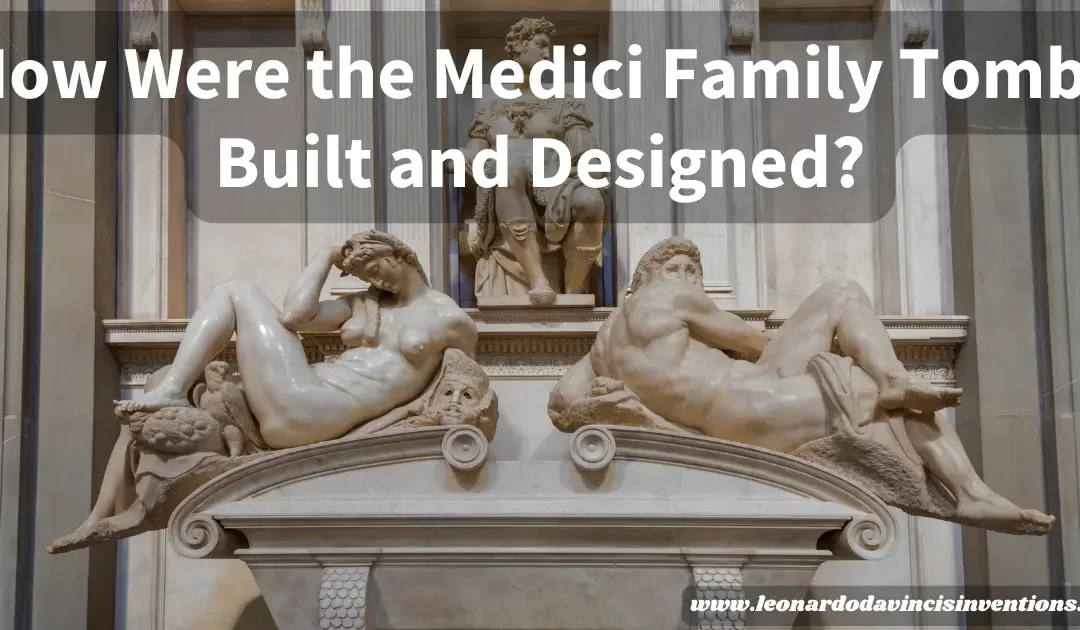
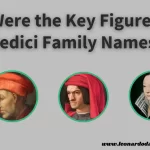
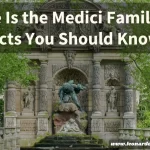
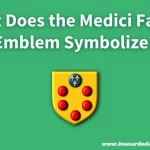
 Leonardo Bianchi,
the creator of Leonardo da Vinci's Inventions.
Thank you for visiting
Leonardo Bianchi,
the creator of Leonardo da Vinci's Inventions.
Thank you for visiting